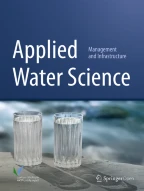
Remote sensing (RS) and Geographic Information Systems (GIS) have become widely used in various fields around the world in recent years. In this paper; we attempt to delineate the groundwater potential zone in the transboundary watershed of Chott-El-Gharbi using the integration of RS, GIS methods. Eight influencing thematic layers viz. geology, rainfall, water table level, lineaments density, slope, drainage density, elevation, and land use/land cover were used. Afterward, Analytical Hierarchy Process technique, which offers good functionality for mapping the groundwater potentiality was used, where ranks and weights, assigned to each factor are computed statistically, based on their relative importance in terms of groundwater potential. Then, groundwater potential zones are classified into five categories namely excellent, high, medium, low, and very low zone, which represent 964.48 km 2 (7.33%), 1467.30 km 2 (11.15%), 7969.51 km 2 (60.57%), 2639.52 km 2 (20.06%), and 116.19 km 2 (0.88%) of the study area, respectively. The very low potential region is found in the southern region of the study area, which is covered by mountains. Moreover, excellent groundwater potential zones are located at the central part of the region of Chott, which has quaternary formations where the infiltration is high. On the other hand, moderate and poor groundwater potential zones cover by the bare lands in the study area. Finally, the results were carefully validated with the yields data of various boreholes in the study area, which reveals an accuracy achievement of 72.41%. The finding of this research constitutes a valuable contribution towards the water resources management, and it forms a significant decision support tool for equitable and sustainable utilization of groundwater resources in the transboundary watershed of Chott-El-Gharbi. The study's findings will also serve as a benchmark for future research and studies, such as hydrogeological modeling.
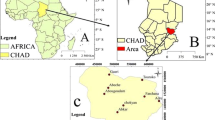
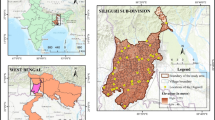
Avoid common mistakes on your manuscript.
Water is vital for all countries in the World. It is essential for human consumption, irrigation, and industry. It is also necessary for ecosystems’ long-term viability (Forslund et al. 2009). Currently, given to the fast growth in demographic pressure, irrigation needs, industrialization, and climate change, water demand increased, putting a strain on the quality and the availability of water resources (Grafton et al. 2011; Shit et al. 2021; Vörösmarty & Sahagian 2000). As Africa’s largest country and the world's tenth-largest, Algeria is threatened by water shortages (Drouiche et al. 2012). Water resources in the country are limited, where around 74 percent of the total water resources estimated to be present in Algeria are renewable water resources, with the remaining 26 percent being non-renewable water resources, totally located in the south of the country (Chabour 2018). Renewable water resources are estimated to be around 14.4 billion cubic meters per year (BCM/year), or about 450 cubic meters per person per year (Water 2020). This is less than the 500 m 3 per capita per year recommended as the scarcity threshold that indicates a water shortage (FAO 2018). These renewable water resources are divided into surface water (11.4 billion m 3 ), exploited by several dams, and groundwater (3 billion cubic meters). Surface water is the main source of water in the north of the country, because there is more rain in this area, and this made it benefit from large resources from surface water, unlike in the south of the country. Non-renewable water resources also known as fossil waters are not replenished by nature at all or for a very long time. They are estimated to total of 5 BMC in the south. Valuable aquifers in the Sahara supply 96 percent of water demand in the south (MRE 2010). The Algerian Ministry of Water Resources was attempting numerous ways to guarantee a continuous supply of water to individuals and communities, and to increase freshwater availability, by desalinating seawater, long-transferring water between watersheds, and the reuse of treated wastewater (Drouiche et al. 2012; Elmeddahi et al. 2016; Hamlat et al. 2013; Negm et al. 2020). It should also be noted that Algeria shares land borders with seven of its neighbors: Tunisia, Libya, Mali, Niger, Mauritania, Western Sahara, and Morocco, with 6,343 km of land borders. Therefore, Algeria shares several aquifers with neighboring countries, which requires efficient management (Labdelaoui 2008). Hence, access to water resources, particularly in arid zones, is a critical component of economic development and the improvement of people's living conditions, as well as their stabilization (Loucks & Van Beek 2017). It is important to note that groundwater is the only water source for economic prosperity and domestic water supply in arid areas such as the Chott-El-Gharbi, the subject of our study. The potentiality of groundwater could be evaluated by the integration of hydrological, geological, and climatic facts (Chenini et al. 2019; Ullah et al. 2009). Accordantly, the majority of groundwater potential evaluations and hydrogeological investigations in Chott-El-Gharbi have been done traditionally using in situ measurements. In the study area the Algerian General Company of Geophysics (CGG), and the Geological Survey of Algeria (AGSA) had previously conducted geophysical and geological investigations (C.G.G 1973; Cornet 1952). Furthermore, the National Agency for Hydric Resources has used the classical method to study the hydrogeological assessment of Chott-El-Gharbi. Besides, the study of water quality in the area was conducted by Boudjema et al. (2019). In addition, Takorabt et al. (2018) defined the effect of the geological features in the Chott-El-Gharbi aquifer system and Mahammad (2012) used the geophysical investigations to identify the different aquifers of the study area. Almost all of these studies that were conducted in the area used classical techniques. Nowadays, in several areas, geospatial tools have appeared as efficient tools for executing spatial data and decision making including hydrogeological mapping of groundwater resources (Elbeih 2015; Thapa et al. 2017). Indeed, using remote sensing (RS) and geographic information systems (GIS) is one of those geospatial tools, and it's critical for analyzing large amounts of hydrogeological data and modeling complex features (Benjmel et al. 2020; Gouri Sankar Bhunia et al. 2021; Hussein et al. 2017; Mallick et al. 2019; Zhao et al. 2020). Furthermore, the ability to generate information in both the spatial and temporal domains, which is critical for successful analysis, forecasting, and validation, is one of the most significant advantages of employing RS and GIS data for hydrogeological monitoring and investigation (Chowdary et al. 2009). It is a more reliable and cost-effective technique to assess groundwater zones than the traditional methods. Therefore, RS and GIS have seen widespread use in hydrogeological research, in recent years (Abijith et al. 2020; Saranya & Parthasarathy 2020). The combination of geographic information systems (GIS) and remote sensing has proven to be an effective technique for determining groundwater potential zones in various watersheds and administrative units (Ifediegwu 2021; Khan et al. 2021; Pande et al. 2021; Rajesh et al. 2021). As a result, this technique was used in the current study. In the past decade, the groundwater potential zones were also defined by topographical parameters such as TMI, slope, elevation, and profile curvature (Benjmel et al. 2020; Lee et al. 2019; Senthil Kumar & Shankar 2014); factors related to the hydrology such as rainfall, flow rates and drainage density (Arkoprovo et al. 2012; Taheri et al. 2020; Zghibi et al. 2020); and geological factors such as faults, lineament, lithology, soil, geomorphology, land use and soil texture (Bhunia, 2020; Fashae et al. 2014; Maizi et al. 2020). So far, numerous techniques, such as the analytic hierarchy process APH, have been used by various scientists (Kaliraj et al. 2014; Kumar et al. 2022; Mallick et al. 2019; Pinto et al. 2017); multi-criteria decision evaluation (MCDE) (Jothibasu & Anbazhagan 2016; Machiwal & Singh 2015; Sresto et al. 2021) and artificial neural network (ANN) (Nguyen et al. 2020; Panahi et al. 2020). In this paper, the groundwater potential zone (GWPZ) for the transboundary watershed of Chott-El-Gharbi was delineated using the combination of RS, GIS methods. Several influential factors were used viz. Geology, rainfall, land use and land cover (LULC), lineaments density, slope, drainage density, altitude, rainfall, and water table level. Then, by overlaying all of those criteria weights with AHP methods, the watershed's GWPZ was conditioned, which offers good functionality for mapping the groundwater potentiality according to several studies (Kaliraj et al. 2014; Mallick et al. 2019; Pinto et al. 2017; Saha 2017). Finally, the study area’s GWPZ was confirmed through the yields data of 29 boreholes representing the area. The main purpose is to provide a more comprehensive assessment of perspective of the groundwater potential distribution in the research region, as well as to create a prospective guide map for groundwater exploration and exploitation, to enable the most efficient and long-term management and development of this precious resource. Such current data will be critical for researchers, and water stakeholders to make informed decisions promptly in this sensible zone.
The Chott-El-Gharbi basin is situated in the northwest corner of the Wilaya of Naâma (West of Algeria). This basin has a latitudinal extension of 32°45′48.58ʺN 34°17′2.37ʺN and a longitudinal extension of 2°4′59.08ʺW 0°44′20.19ʺW, covering an area of 13,157 km 2 , representing about one-third (1/3) of the Wilaya. It is limited by the mountains of Tlemcen from the north, (Djebel Sidi Abed and Djebel Mekaidou), the west by the mountains of Tendrara in Morocco; the south and the southeastern by the Ksour mountains (Djebel Gaaloul, Djebel Bou Ghenissa, Djebel Hafid, and Guetoub El Hamara); and the east by the watershed of Chott-Ec-Chergui (Fig. 1). The Chott-El-Gharbi is a cross-border basin, which accounts for about 72.02% (9475.67 km 2 ) in Algeria and 27.98% (3681.32 km 2 ) in Morocco. The relief is almost flat, except in the south-eastern part where the presence of mountains. The approximate altitude in the watershed ranges between 1003 and 1850 m above sea level (m.a.s.l) (Derdour et al. 2020). Arid to semi-arid climatic conditions, as well as low and variable pluviometry, characterize the region. (Derdour & Bouanani 2019). With an estimated average rainfall of 287 mm, the watershed receives the majority of its rainfall from the north. The average minimum and maximum temperatures range from 7.22 to 30.03 degrees Celsius. Summer temperatures can reach 48 degrees Celsius, while winter temperatures can drop below zero degrees Celsius (Derdour et al. 2021). From a hydrogeological point of view, the watershed is characterized by four aquifer systems of groundwater resources (Mahammad 2012):
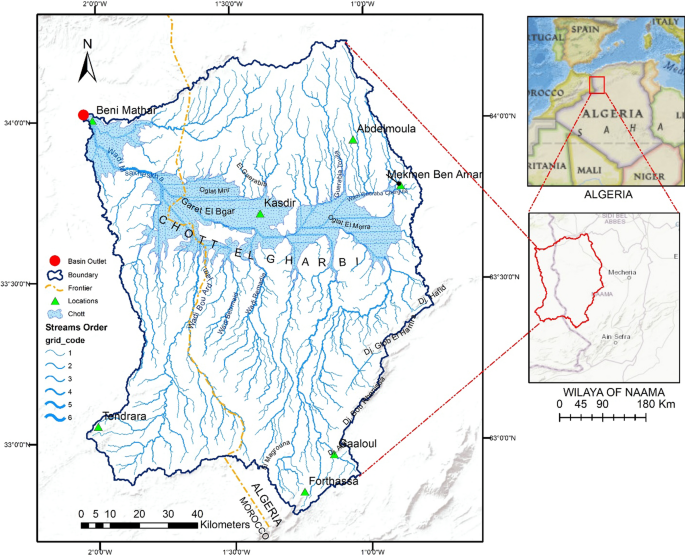
Except in the mountains, where remnants of primitive forests can be found, the vegetation of the area is characterized by a steppe physiognomy (Bentekhici et al. 2018). In addition, in many of its localities, the Chott-El-Gharbi region still has a serious sand encroachment problem (Bouarfa & Bellal 2018). In addition, the watershed of Chott-El-Gharbi is drained by a slight hydrographic network, whose total length is 5145.22 km. Most of Wadis originate from the Tellian Atlas in the north part and the Ksour mountains in the southern part. They are known by a transient flow, and the watershed's outlet is in the Moroccan province of Beni Mathar. In the study area, all water used for domestic purposes comes from groundwater sources. The populations of several municipalities in the wilayas of Nâama, Tlemcen, and Sidi Bel-Abbès, benefit from the transfer of water from the "Chott-El-Gharbi" hydrographic basin, which contributes to improving their drinking water supply with 110,000 cubic meters per day, and irrigating around 6150 hectares of agricultural perimeters in future (APS 2018).
This section explains the data sources and data processing procedures used to evaluate the groundwater prospect zones in the study area for each parameter. Figure 2 depicts the overall methodology to demarcate various GWPZ in the watershed of Chott-El-Gharbi. The number of influencing factors considered in the assessment of groundwater in a given aquifer is also dependent on the amount of data available in the study area. In the current study, eight (08) groundwater influential factors viz. Geology, lineaments density, land use and land cover (LULC), slope, altitude, drainage density, rainfall, and water table level. Field surveys and extra data from other organizations were also taken into account when determining the potential groundwater zones. Additionally, two important steps of the methodology used are reclassification of individual layers and identification of GWPZ by combining reclassified layers using a weighted overlay analysis technique driven by an AHP-pairwise comparison matrix. The digital elevation model (DEM), type ASTER (advanced spaceborne thermal emission and reflection), with 30 m resolution, downloaded from the Earth Explorer web site was used to delineate the watershed boundaries, to derive the stream networks, and to prepare altitudes and the slope map (USGS 2021a). Then, Base map preparation was carried out using the study area's boundary for each variable. The geological map was digitized from the published geological survey of Algeria scale of 1: 500,000 (Cornet 1952). The lineaments and their density were digitalized from the geological map, and they were also automatically extracted through the line algorithm in PCI Geomatica software from Landsat 8 OLI images (USGS 2021b). Land use land cover map (LULC) was extracted from a mosaic of two Landsat images with 30 m spatial resolution and 11 spectral bands which were acquired on 30 June 2021, free of charge from the Earth Data (Path 198 and Row 36, Path 198 and Row 37) through supervised classification by using ARC GIS environment. To get images with the least amount of cloud cover, Land Cloud cover was chosen less than 05 percent. The drainage density data were obtained from the clipped DEM using a line density analysis tool in Arc GIS. Rainfall data were provided from Tropical Rainfall Measuring Mission data (TRMM Data); the data were downloaded in netCDF format; then, they are analyzed and interpolated spatially using the method of Kriging in Arc GIS. The data were accessed from the NASA website (NASA 2021). The field data, which were collected from the department of water resources of Wilaya of Naâma, and the Algerian Waters Unit (ADE) was used to create the map of the water table level viz. locations of boreholes by using manual Garmin GPS; depth to water level and the yields data of 29 boreholes. The maps were all created using the Universal Transverse Mercator (UTM) coordinate system and the WGS84 spatial reference system (WGS84-UTM Zone30N) and they were reclassified into five classes (very low, low, medium, high, very high), according to the classification of MacDonald et al. (2010). Table 1 summarizes the primary and secondary data sources.
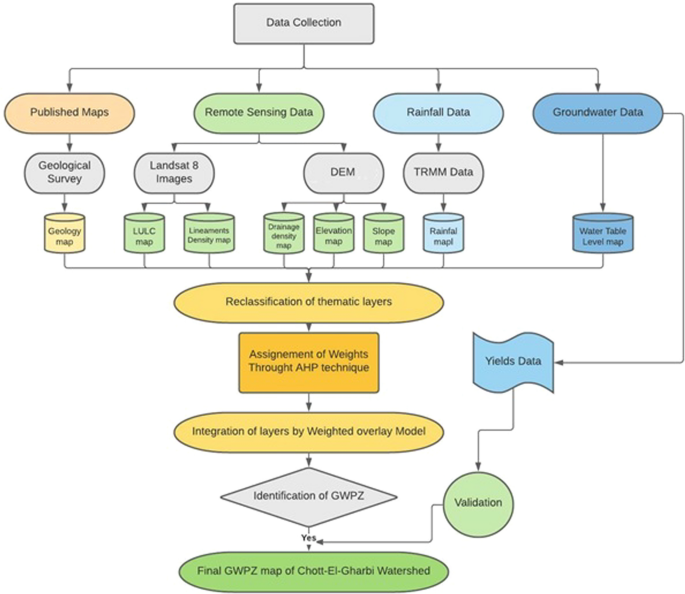
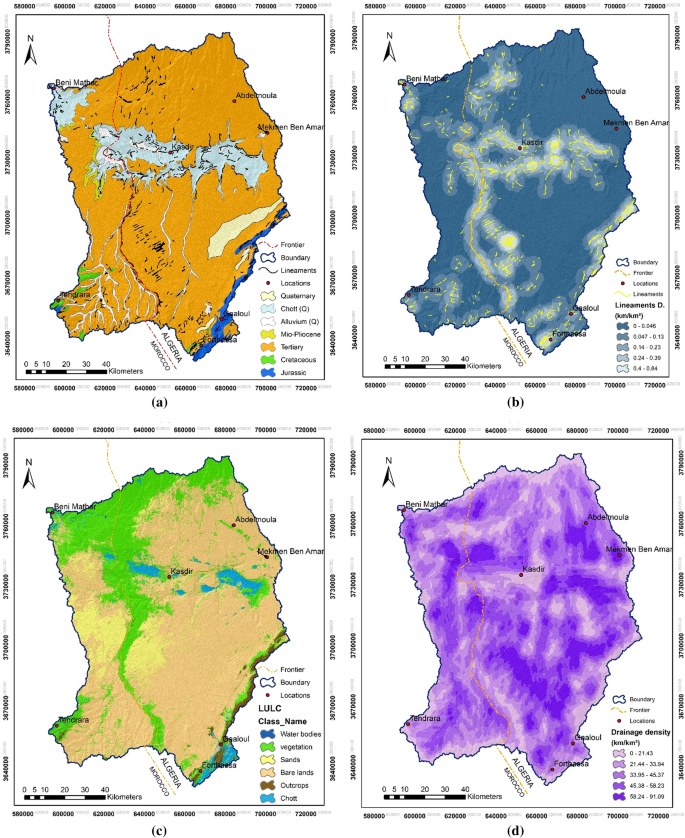
A lineament, which is a linear property, expresses the underlying structural features such as faults, fractures, cleavages, and discontinuity surfaces. They act as reservoirs and conduits for groundwater, oil, and natural gas, as well as indications of regional and local tectonic tendencies and mineral deposits (Sander 2007). Areas with high lineament density are supposed to have a high potential for groundwater, and vice versa. The study area is crisscrossed with lineaments formed by various tectonic activities in the past. The lineaments density map is depicted in Fig. 3b. The basin's lineament densities range from 0.046 to 0.84 km/km 2 . The higher lineaments densities are found at the northern part in the Chott area, and in the frontier border marked by Wadi Bou-Ardjam. These faults have indisputable hydrogeological relevance due to their size, as they are a priori beneficial for aquifer recharge in the area (Takorabt et al. 2018).
In any region, LULC plays a significant role in the potential of groundwater via runoff and infiltration. It is one of the factors that influence the availability and occurrence of groundwater (Hoffmann 2005; Hussein et al. 2017). As shown in Fig. 3c, LULC of Chott-El-Gharbi watershed is subdivided into 06 subclasses namely, bare lands, vegetations, dunes, outcrops, chott and water bodies (Represented by Msakhsekha dam) occupying area about 5997.59 km 2 (45.58%), 4585.13 km 2 (34.85%), 2164.18 km 2 (16.45%), 145.40 km 2 (1.11%), 264.1 km 2 (2%), 1 km 2 (0.01%), respectively. Chott is an excellent source of groundwater recharge; therefore, they are assigned the high rank followed by vegetation, dunes, and bare lands. The least rank is assigned for outcrops; known by their low infiltration rate.
The drainage network aids in determining groundwater potential and assessing recharge levels; a high recharge potential suggests a high concentration of drainage channels. Percolation is important in high-density areas, which means low runoff (Schilling et al. 2015). The drainage density depends on many factors such as the topographical characteristics of the watershed the geology, and also on certain anthropologic and climatic conditions (Rajaveni et al. 2017). Five main drainage density groups have been identified and mapped in the study area, as shown in Fig. 3d. The drainage density values range from 0 to 91.09 km/km 2 . The map shows that the lowest values of drainage density are situated in the southeastern part of the study area in the mountain’s parts. In contrast, the high values of drainage density are found in the flow zones of the wadis, which are composed of recent alluvial sediments.
The slope represents an important thematic layer for recharge and groundwater occurrence. Slope refers to regional and local relief that has an important impact on groundwater potentiality; regions with steep elevation angles are associated with high amounts of runoff and less infiltration and vice versa (Mogaji et al. 2015). In this paper, it has been detected that the relief is almost flat, except in the south-eastern part where the presence some mountains (Fig. 3e). Therefore, the overall area has a gentle slope and the prospects for groundwater are good, however, the mountains region shows a high slope. Consequently, the slope map is divided into five categories, ranging from 0 to 35%, with a high rank assigned to lower slope; considered a plain area characterized as a good zone of recharge. Whereas the least rank is assigned to a higher slope. Because runoff flows much more slowly in Chott than in other areas, the region is more vulnerable to groundwater potentiality and recharge.
Groundwater potential is influenced by elevation. Plainer areas and lower elevations retain water for longer, resulting in greater infiltration and water recharge (Thapa et al. 2017). The elevation map in Fig. 3f ranges from 1003 to 1850 m. The higher elevation corresponds to the southernmost peak of Djebel Arar, while the lower elevation corresponds to the watershed outlet in Beni Mathar on the Moroccan side. Because of the almost flat terrain, the runoff will be slow in low-elevation areas, giving rainwater more time to infiltrate. Conversely, in high elevations whose slopes are higher, the runoff is relatively high, and less possibility of groundwater availability. Therefore; Plain areas like “Chott” were given top priority, followed by moderate and high elevated points; as a result, low altitudes have a high rank, while high altitudes have a low rank.
The most common influencing factor on groundwater potential is rainfall (Owor et al. 2009). Water infiltrates the subsurface via fissures and soil, and rain is the principal source of groundwater replenishment. Runoff calculations often require other rainfall properties, such as duration and intensity (Yu & Lin 2015). Rainfall is the only source of groundwater recharge in the Chott-El-Gharbi region through infiltration from fractured zones. Rainfall data for the previous 20 years were collected from the internet, and a spatial distribution map was created using the krigeage method in Arc GIS (Fig. 3g). Rainfall of the region was divided into five classes: (i.e., 312.3–335.4, 299.3–312.2 to 290.8, 286.9–299.2, 274.2–286.8, less 254.4–274.1 mm/year), covering the area of about 3322.5 km 2 (25.25%), 2114.6 km 2 (16.07%), 2789.8 km 2 (21.20%), 2887.0 km 2 (21.94%), and 2043.1 km 2 (15.53%), respectively. Areas with low annual rainfall are given less weighted value, compared to areas with high annual rainfall which were are given a higher weighted value. A closer examination of the thematic precipitation map reveals that the northern part of the study region receives comparatively more rainfall, however, the southern part receives the least.
The water table level has a significant impact on the accumulation and movement of surface runoff over the land surface. Data on depth to water table was collected from boreholes throughout the study area, providing enough information about groundwater (location and water table level). The Inverse Distance Weighted (IDW) interpolation approach has been used for creating the spatial distribution map of water table level because this interpolation method depicted the best model performance among the considered methods (Table 3).
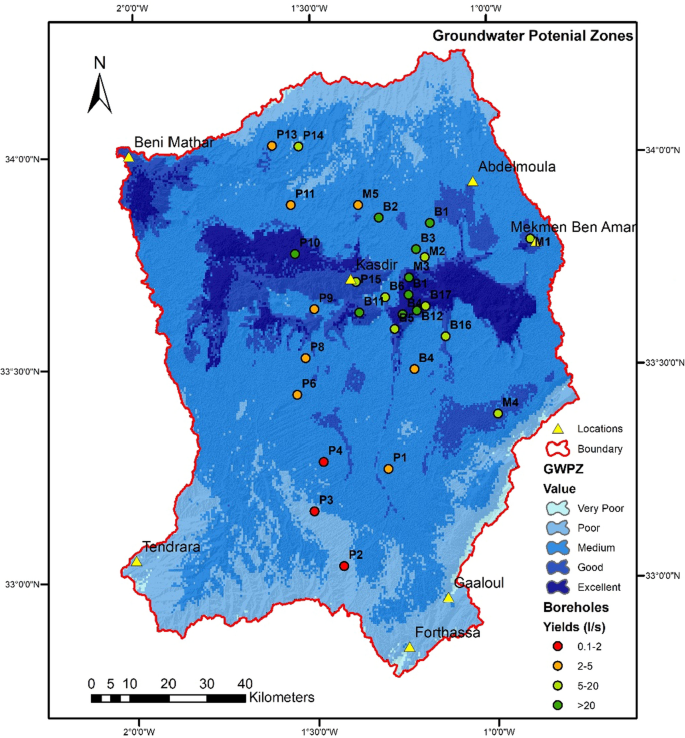
Waterpoints yields data from our study area were used to validate the groundwater potential map, as shown in Fig. 4. The validation results revealed that out of 29 wells, 21 wells accurately match with the GWPZ map. The highest yield among groundwater data collected was in the well (MAG02) with 38 l/s in the region of Chott. While the well (P2) presents the lowest yield (03 l/s). According to the British Geological Survey, well yields can be grouped into five categories: Areas where well yield lie between 0 and 0.1 l/s were categorized as very low, 0.1 and 2 l/s as low, 2 and 5 l/s Moderate, 5 and 20 l/s as high and more than 20 l/s were classified as high potential groundwater regions (MacDonald et al. 2010). From the results, we observe that out of the 09 wells having yields over 20 l/s, 06 wells representing 66.67% of the collected data, are falling on the high groundwater potential zone. Most of these are found in the region of Chott. Out of the 07 wells yield data, 06 (85.71%) of them are falling on the good groundwater potential zone, whereas out of the 08 moderate yield (2–5 l/s) wells, 87.50% are falling on the groundwater potential zone classified as moderate. Out of the 03 yield data, 02 (66.67%) of them are falling on the low groundwater potential zone (Fig. 5). This analysis demonstrates the method's reliability. This is shown by the success rate of implanted drilling, where the results provide that 72.41% percent of groundwater inventory data agree with the corresponding groundwater potential zone classifications. Similar results are also achieved by Kumar et al. (2022) and Saha (2017) showed 78% and 77.76% agreement, respectively, between the field data and the predicted map created by using the analytic hierarchy process (AHP). Our results showed some improvement compared to other approaches of Multi-criteria decision making (MCDM) for evaluating groundwater potential. Sresto et al. (2021) for example, used the fuzzy logic method to identify groundwater potential zones in Bangladesh, where the results showed 68% of agreement between groundwater potentiality and wells data. Whereas, Thapa et al. (2017) who used the multi-influencing factor (MIF) in West Bengal, showed 78% of accuracy. This is an advantageous and time-saving method compared with previous classical methods used in this area (Azzaz 1996; Boudjema et al. 2019; Mahammad 2012; Takorabt et al. 2018). The methods used in our research, add new valuable knowledge in the study area, results, and methods that can be accomplished in numerous arid areas at a global scale. However, this work suffers from several limitations notably related to the lack of data from the Moroccan side, and the absence of the wells in the very low category (yields < 0.1 l/s) to validate the very low potentiality zones. Furthermore, the absence of ground survey-based geophysical techniques for all the study areas. However, groundwater potential zones using geophysical surveys are not only expensive but also tremendously time-consuming. It's also recommended the enclosure of other geological, groundwater, and metrological factors to develop the result.
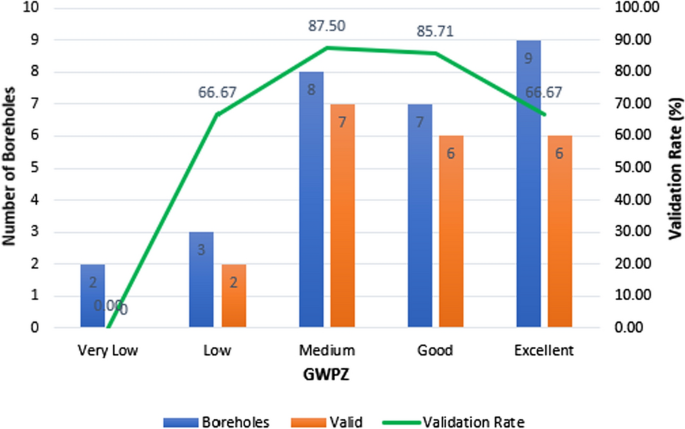
The adoption of advanced geospatial techniques in the field of water has been widely used by the scientific community throughout the world. The main goal of this research was to use a combination of Remote Sensing (RS), Geographic Information System (GIS), and Analytical Hierarchy Process (AHP) to establish a simple and accurate approach for delineating the groundwater potential zone in the Chott-El-Gharbi transboundary watershed. The influencing factors were considered including geology, rainfall, water table level, lineament density, drainage, density, elevation, slope, and land use/land cover. The results revealed that about 18.49% of the total study area falls from “excellent” to high zones, and about 60.57% of the total has a medium groundwater potential. However, the “low” and “very low” zones represent 20.94% of the study area. The mountains region in the southeastern part of the study area was led to very low groundwater potential due to hydrogeological conditions of the subsurface. In the contrast, excellent and good groundwater potential zones were located at the central part in the region of Chott, where the infiltration is high due to the quaternary landforms. The most promising potential zones in the study area occur in low altitudes, quaternary landforms, high drainage densities, and lower slopes. The delineated groundwater potential zones map was validated using the groundwater yields of the study area. The validation of results using yields data demonstrates the adequacy of the approach employed in this study, with an accuracy achievement of 72.41%. The results' accuracy proves that Satty’s analytical hierarchical process is one of the appropriate techniques to assign the weightage for potential groundwater studies. Therefore, the groundwater potential zone map of the present study provides insights for water stakeholders, local authorities, and decision-makers to formulate better water sustainable management in this transboundary region for urban and agricultural purposes, which can minimize the cost, time, human power with higher accuracy. The lack of data from the Moroccan side is one of the most limiting constraints of this approach.
Groundwater has traditionally been considered a national issue, but the need for international cooperation on groundwater is increasingly recognized. Conflicts often arise from ignorance of the real potential of the resource. It is extremely important and critical to manage groundwater resources in neighboring states. Groundwater initiatives are now insufficient; in fact, policies and development strategies at both the national and regional levels give groundwater relatively little attention. Considering the importance and location of the study area, one of the key recommendations is to manage the groundwater through a permanent bilateral consultation mechanism between Algeria and Morocco, to improve understanding of the system and its exploitation. This cooperation should be achieved through a steering committee made up of the national structures in charge of water resources in each of the two countries, which can establish a large piezometric network for observation, developing databases on the socioeconomic uses of water, promoting and performing studies and research conducted in partnership, and analyzing and sharing data concerning the resource to protect this vital resource and to increase the overall benefits that can be derived from groundwater. Cooperation should be based on sovereign equality, territorial integrity, fair and reasonable use, and mutual benefit. It is necessary to emphasize certain principles, such as precaution, long-term monitoring of the resource, monitoring, and priority of protection. Among the experiences from which one can learn: the formal agreements between Algeria, Tunisia, and Libya sharing the Northwest Sahara Aquifer System (SASS), the agreement between Chad, Egypt, Libya, and Sudan to manage the Nubian Sandstone Aquifer System (NSAS) and the collaboration between Mali, Nigeria, and Niger for joint management of the Iullemeden aquifer system (IAS). The findings of the current research would aid in proper water resource planning and sustainable management in this sensitive transboundary zone.
The authors gratefully acknowledge the support of the General Directorate of Scientific Research and Technological Development (DGRSDT) and the Water Resources Department (DRE) of the Wilaya of Naâma (Algeria). We are greatly grateful for the in-depth discussion by the editor and the anonymous reviewers that have improved the quality of the manuscript.
“The authors received no specific funding for this work.”